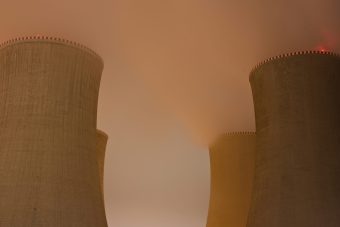
The issue of food security is becoming increasingly important due to climate change, degradation of arable land, pollution and population growth. There are many ways to ensure food is safe, and one stands out.
At the recent International Symposium on Food Safety and Control, organized by the International Atomic Energy Agency (IAEA) and the Food and Agriculture Organization of the United Nations (FAO), nuclear technologies were presented as an asset to help fight hunger, reduce malnutrition and improve sustainability.
On the occasion, Qu Dongyu, Director-General of FAO, pointed out that it is essential to control food safety from the beginning – from soil and water to agricultural practices – while highlighting the role of nuclear technologies as crucial in setting scientifically based standards for food.
When asked what nuclear techniques are, the answer is that they are methods based on the principles of atomic physics and technology, and they can be applied for various purposes – from medicine or industry to agriculture.
Nuclear technology has contributed to detecting, controlling and preventing diseases that cross borders, as well as zoonotic diseases, that is, diseases transmitted from animals to humans.
Radiosterilization can be cited as one of the examples of nuclear energy use. Radiosterilization uses ionizing radiation and is a form of energy produced by nuclear reactions. Radiosterilization removes bacteria from food, simultaneously extending its shelf life. Furthermore, the productivity of crops is improved, which reduces the use of harmful pesticides.
More:
- WHERE IS GERMANY TODAY, ONE YEAR AFTER GOING NUCLEAR?
- DESALINATION AND SMALL NUCLEAR REACTORS – THE FUTURE OF IRAQ?
- GERMANY: A FUSION POWER PLANT AS AN ALTERNATIVE TO NUCLEAR POWER PLANT?
One of the types of high-energy ionizing radiation, which is a result of the nuclear process, is gamma radiation. Small fruit flies are used in this context as an example. Fruit flies cause significant problems for farmers worldwide, attacking fruit plantations and thus causing billions of euros in damage. The so-called sterile insect technique is used in the fight with these insects. This technique involves the sterilization of male fruit flies by gamma radiation. In this way, they can no longer reproduce, and after sterilization, they are free to return to nature.
Gamma radiation has other benefits, too. Scientists are constantly searching for new varieties of plants that can be used for cultivation and human nutrition. To create new species or improve existing ones, scientists can change the genetic material of plants, which is done by causing mutations. Natural mutations rarely occur because they arise spontaneously when an error occurs in the so-called DNA copying process during plant reproduction. However, this process can be made more frequent and faster by using gamma radiation. More precisely, this type of radiation causes mutations in the DNA of plants and thus, new varieties are created. It should be noted that this can be done taking into account adaptation to climate changes, but also to different conditions in the natural environment where the plants are grown. The resulting plant varieties are more resistant to diseases, droughts and other challenges.
A third example of the benefits provided by nuclear techniques is the possibility of measuring and controlling soil moisture and the nutrients found in it, which are crucial for plant growth. Namely, the radioactive nuclides that remained in the soil after nuclear events facilitate the measurement of soil erosion or, for example, the evaluation of the sedimentation rate. This way, information about soil health and its changes over time is obtained.

